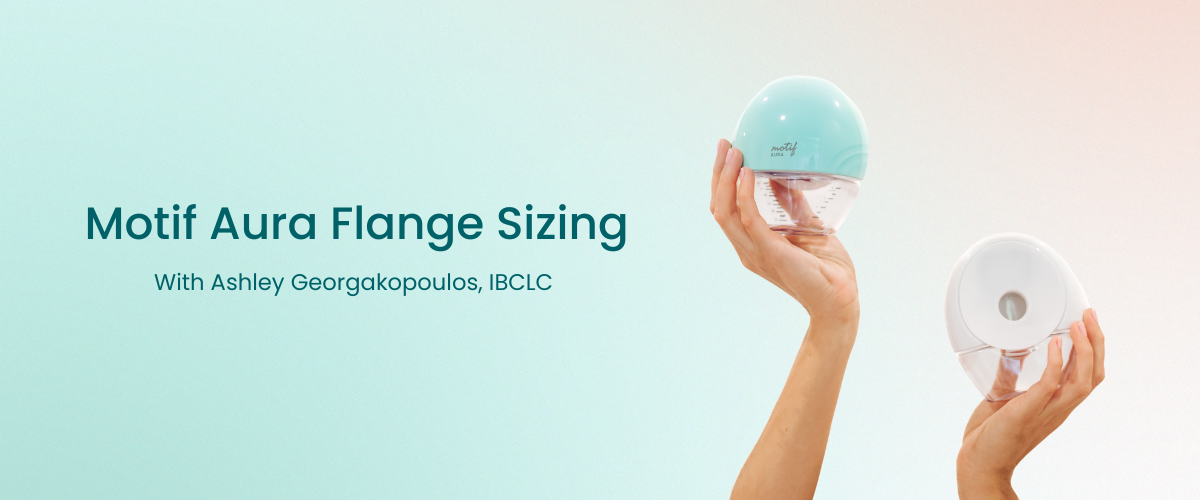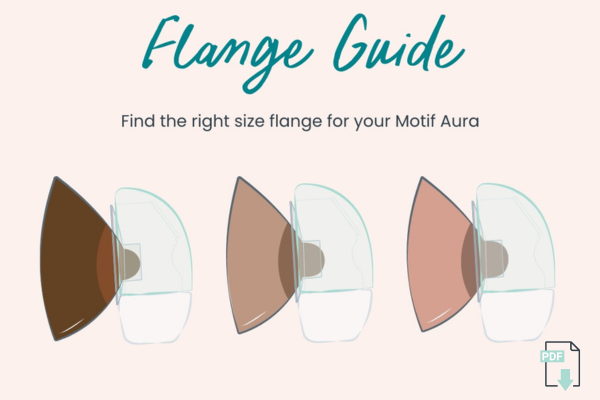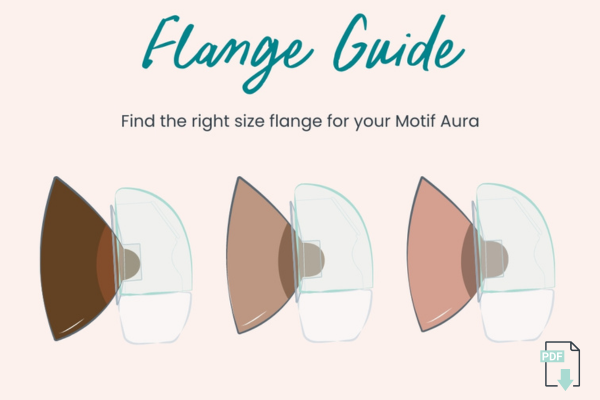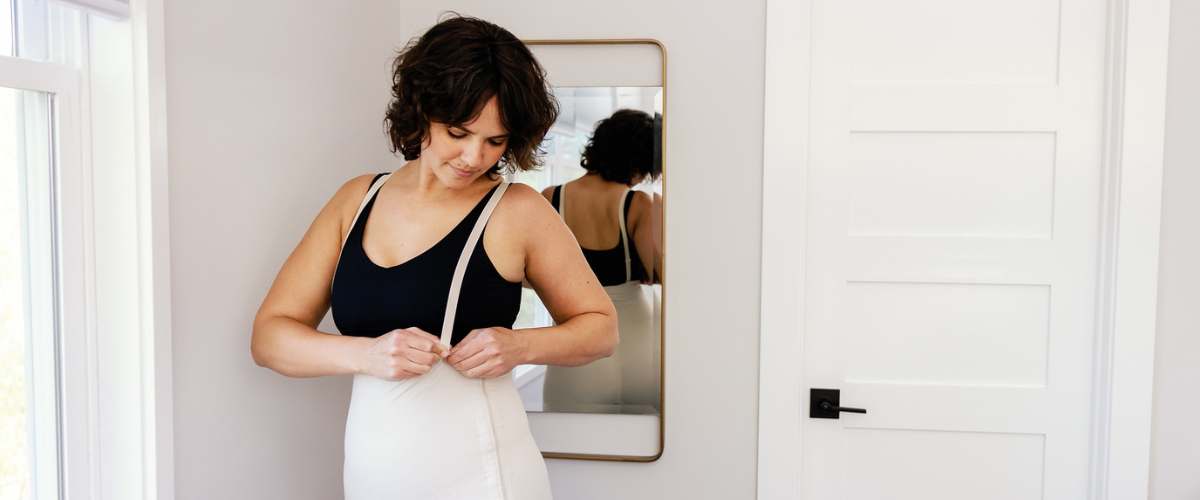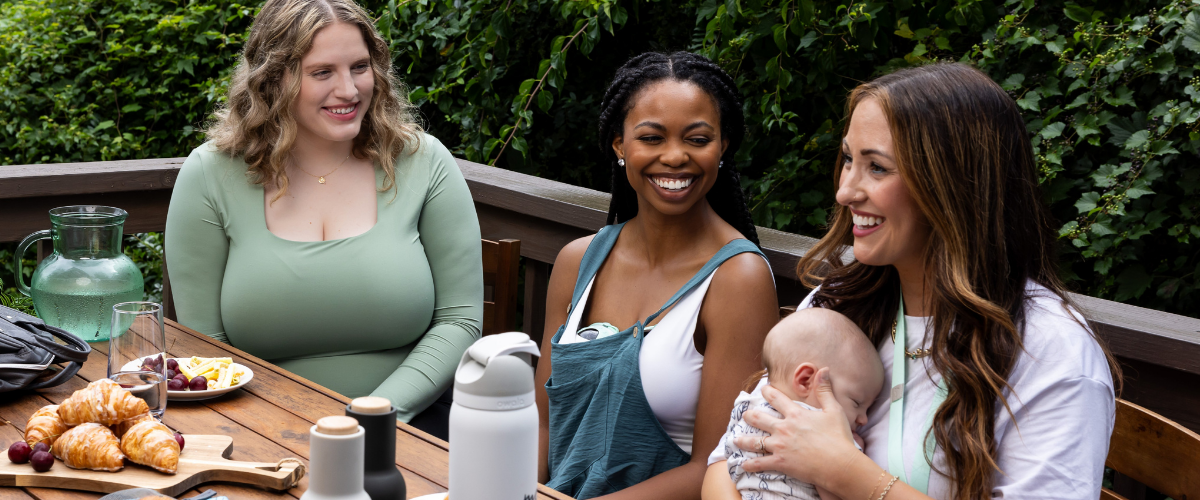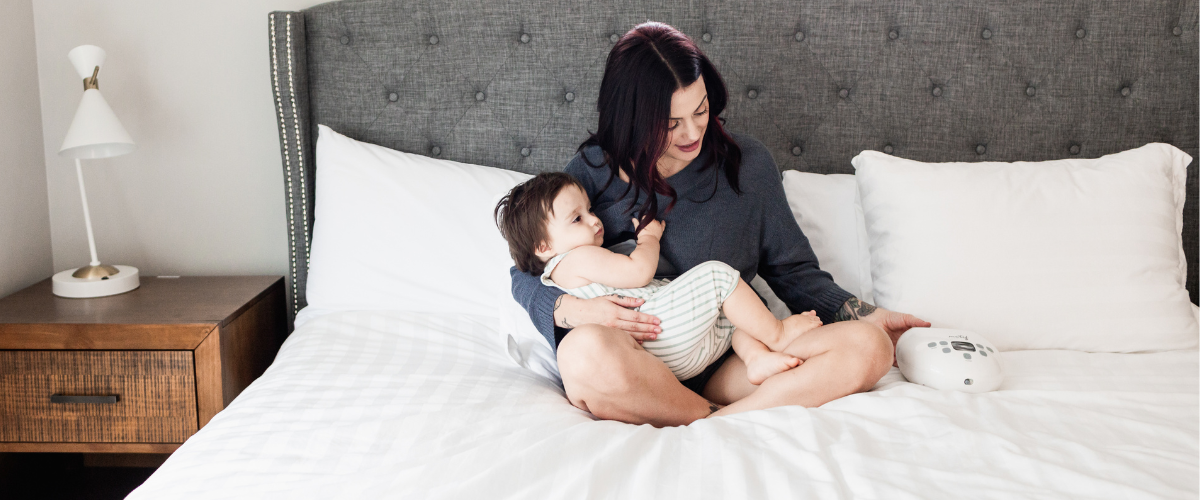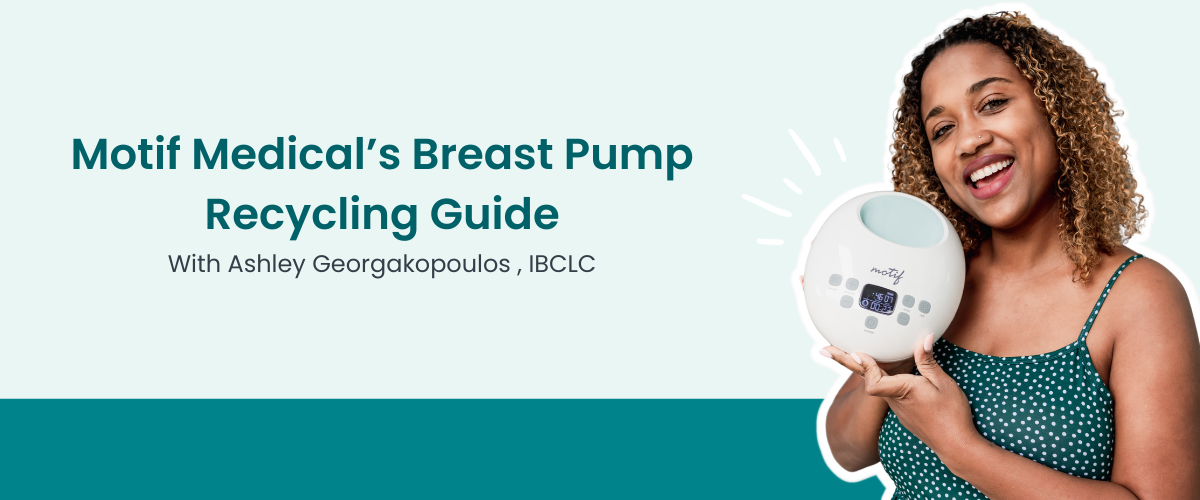Does Flange Size Matter?
Did you know that optimal milk output and supply starts with the correct flange size? Size absolutely matters in both comfort and effectiveness of your pump. The first checkpoint in troubleshooting pumping is “do we have the right size?” It's also something that needs to be checked throughout the entirety of the pumping journey. From water retention and mother’s weight postpartum to fluctuations in milk demands throughout that first year postpartum, breast tissue and nipple diameters have the potential to change sizes.
The flange mimics a proper breastfeeding latch. Too large, and the areola gets compressed, causing the milk to get stuck prior to release, much like the kink in a water hose. Too small, and there’s too much friction on the nipple, causing blisters, soreness, and inadequate milk production.
Hands-free pumps are becoming more and more popular, as their ease and convenience is something we could all use a little of. Choosing the correct size breast flange will ensure that level of ease is achieved, along with effectiveness. The pumps rely on higher suction strength to stay in place, but also the proper fit. Any slacking, and the suction seal is compromised. Too tight, and it's uncomfortable and counterproductive.
It may seem overwhelming, (one more thing to learn!) especially for new moms. Let’s take a closer look at how to find the right size.
When to Measure Your Nipples
Throughout pregnancy the breast tissue goes through changes. This includes the size of the breast, as well as the darkening of the areola. Another change would be the size of the nipples. While, for some, the change is subtle, it can still impact the initial fit of the flange. Women tend to retain fluid as the pregnancy progresses, as well as when fluids are administered.
The early part of the third trimester or 2-3 weeks postpartum is a great time frame to measure the nipple to get a good idea of what size the nipple will be for the majority of the times needed for pumping. A separate measurement may be needed if pumping and expressing milk is needed immediately postpartum.
Basics of Measuring
Sizing
Flanges are sized in millimeters (mm). Again, it should be slightly larger than the nipple measurement to allow for movement. It’s also important to measure BOTH nipples, as just like in breast (and bra) size, symmetry is not always part of the equation.
To determine what size you need, you’ll need to know your nipple size. You can measure your nipple by taking a ruler or measuring tape to measure the diameter of your nipple (the horizontal width across it). Measure the nipple alone, do not include the areola which is the outer edge around your nipple. You then need to add +4 to the overall measurement. The measurement should be in millimeters (1 cm = 10mm).
Select your flange size based on your measurement.
Examples
- If you measure up to 11mm use size 15mm.
- If you measure up to 13mm use size 17mm.
- If you measure up to 15mm use size 19mm.
- If you measure up to 17mm use size 21mm.
- If you measure up to 20mm use size 24mm.
- If you measure up to 24mm use size 28 mm.
- If you measure up to 25mm use size 29 mm.
Quick Fit: If a manual or measuring tool is not available when you need to assess your size, there is a way to check to get an approximate flange measurement.
Make the ASL sign for “I love you,” and compare the fingers for approximate nipple size comparison. The thumb 24-26 mm, the index 21-23mm, and the pinky 20 or smaller. Sizes needed would be 30, 27, and 24, respectively.
Once a size estimate is completed, try pumping. Observe the fit and movement to ensure you’ve found the right size flange. Use the included sizing guides in Motif’s manuals to ensure the proper size flange. Motif’s goal is to help mom have the most comfortable pumping journey possible. Our handy flange sizing chart helps you determine your best fit. Be sure to review each size option to choose the one that will fit best.
How to Ensure the Fit + Things to Look For
A breast pump flange (also called a breast shield) is the cone-shaped plastic cup that fits directly over your nipple to form a seal around the areola. Vacuum suction creates an effective seal that gently draws the nipple into the funnel for milk extraction.
The wrong size flange could impact your milk flow and damage breast tissue. It can result in breast pumping pain, blocked milk ducts, swelling, and nipple damage. The right breast shield size allows you to pump comfortably and maximize the amount of milk you produce.
When placing the flange, play close attention to how the nipple sits in the narrow tunnel. A proper fit has the nipple centered, without any contact with the rim. This allows the nipple to move freely and stretch as it’s drawn into the flange. Check the narrowing tube. Does the nipple touch the sides? If so, the flange is most likely too
small. Is the areola completely covered by the funnel and sucked into the narrow? It may be too large of a size.
When placing the flange, play close attention to how the nipple sits in the narrow tunnel.
A proper fit has the nipple centered, without any contact with the rim. This allows the nipple to move freely and stretch as it’s drawn into the flange. Check the narrowing tube. Does the nipple touch the sides? If so, the flange is most likely too small. Is the areola completely covered by the funnel and sucked into the narrow? It may be too large of a size.
Since it's referred to as “breastfeeding” and not “nipple feeding,” the nipple is not the only part of the breast to consider. The areola is also important. The areola is the darkened area around the nipple. The primary function of the areola is to serve an easy-to-see bullseye for the baby to aim for when latching. It’s also a collector where all of the milk ducts and channels send the milk from storage.
The funnel of the flange mimics the lips of a baby, who will pull not only the nipple into their mouth, but also just a small amount of the areola. If none of the areola makes it into the mouth or the flange, there is inadequate stimulation to the breast and that may interfere with long-term milk supply and production. It may also affect comfort, as this could also lead to tightness around the nipple, which has a negative impact on milk production, too.
A comfortable fit means less physical stress on the breasts, which helps the body relax and respond well to oxytocin, the hormone responsible for releasing milk!
Information provided in blogs should not be used as a substitute for medical care or consultation.

